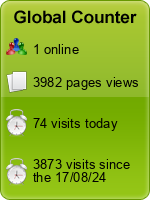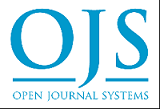Efektivitas teleMedika dalam mencegah multidrug-resistant pada pasien tuberkulosis paru
DOI:
https://doi.org/10.33024/hjk.v18i7.410Keywords:
Multidrug-resistant (MDR), TeleMedika, TuberkulosisAbstract
Background: Multi drug resistance can occur when patients with pulmonary tuberculosis (TB), which is a chronic infectious disease caused by the bacterium Mycobacterium tuberculosis. Transmission occurs if someone inhales droplets containing tuberculosis through the mouth or nose, upper respiratory tract, bronchi and reaches the alveoli. Tuberculosis treatment does not only involve MDR (Multidrug-Resistant) TB, but also has side effects from this disease, one of which is improving the quality of life. So, the effects of treatment for Multi Drug Resistance (MDR) include physical and mental conditions.
Purpose: To determine the effectiveness of telehealth in preventing multidrug-resistant tuberculosis patients.
Method: Quantitative research design with quasi experimental design with pretest posttest nonequivalent control group design. The study was conducted at the Grogol Health Center in February-March 2024, with a treatment population of 33 respondents. The sample used consisted of 15 respondents in the intervention group and 15 respondents in the control group.
Results: The effectiveness of telehealth in preventing multidrug resistant tuberculosis patients is all in the good category and telehealth has been proven to be effective in preventing multidrug-resistant pulmonary tuberculosis. It is known that the control group still obtained a quite lower category of multidrug resistant prevention compared to the experimental group, while the experimental group used telehealth. Things that need to be considered in homecare services using telehealth are that patients must be cooperative and committed to carrying out interventions independently at home
Conclusion: That telehealth has proven effective in preventing multidrug resistance in pulmonary tuberculosis patients.
Keywords: Multidrug-resistant; Telehealth; Tuberculosis.
Pendahuluan: Multidrug-resistant (MDR) dapat terjadi ketika pasien tuberculosis paru (TBC) merupakan penyakit menular kronis yang disebabkan oleh bakteri Mycobacterium tuberculosis. Penularan terjadi jika seseorang menghirup droplet yang mengandung tuberkulosis melalui mulut atau hidung, saluran pernafasan bagian atas, bronkus dan mencapai alveoli. Pengobatan tuberkulosis tidak hanya melibatkan TBC MDR, namun mempunyai efek samping salah satunya meningkatkan kualitas hidup, sehingga efek pengobatan MDR terdapat kondisi fisik dan mental.
Tujuan: Untuk mengetahui efektivitas teleMedika dalam mencegah multidrug-resistant pada pasien tuberkulosis paru.
Metode: Desain penelitian kuantitatif dengan rancangan quasi eksperimental design dengan pretest posttest nonequivalent control group. Penelitian dilakukan di Puskesmas Grogol pada bulan Februari-Maret 2024 kepada 30 sampel terdiri dari 2 kelompok yakni, 15 partisipan kelompok intervensi dan 15 partisipan kelompok kontrol.
Hasil: Efektivitas teleMedika dalam pencegahan MDR pasien tuberkulosis semua termasuk kategori baik dan terbukti efektif dalam pencegahan MDR. Kelompok kontrol diketahui masih diperolehnya pencegahan MDR kategori cukup lebih rendah, sedangkan kelompok eksperimen dengan penggunaan teleMedika. Hal yang perlu diperhatikan dalam layanan homecare dengan teleMedika, pasien harus kooperatif dan berkomitmen untuk melakukan intervensi secara mandiri di rumah
Simpulan: TeleMedika terbukti efektif dalam pencegahan MDR pada pasien tuberkulosis paru.
Kata Kunci: Multidrug-resistant (MDR); TeleMedika; Tuberkulosis.
References
Aliyanto, W., Suarni, L., Sono, S., & Hajar, A. I. (2021). Pengembangan Telemedika“SIPISPeKa” sebagai Solusi Mensukseskan Program Indonesia Sehat dengan Pendekatan Keluarga (PIS-PK). Jurnal Kesehatan, 12(1), 61-73.
Ariyanti, S., & Kautsarina, K. (2017). Kajian Tekno-Ekonomi pada Telemedika di Indonesia [Techno-Economic Study on Telemedika in Indonesia]. Buletin Pos dan Telekomunikasi, 15(1), 43-54.
Arjuna, A., & Sukihananto, S. (2019). Mobile Health Upaya Dalam Meningkatkan Keberhasilan Pengobatan Pasien Tuberculosis. Citra Delima Scientific journal of Citra Internasional Institute, 2(2), 89-94.
Cahyati, W. H., & Maelani, T. (2019). Karakteristik penderita, efek samping obat dan putus berobat tuberkulosis paru. HIGEIA (Journal of Public Health Research and Development), 3(4), 625-634.
Damaranti, C. P., & Hidayat, B. (2023). Tantangan dan Strategi Manajemen Pasien Tuberculosis di Negara Berkembang Selama Masa Pandemi COVID-19: Literature Review. Media Publikasi Promosi Kesehatan Indonesia (MPPKI), 6(3), 393-403.
Ding, Y., Raterink, R.-J., Marín-Juez, R., Veneman, W. J., Egbers, K., van den Eeden, S., Haks, M. C., Joosten, S. A., Ottenhoff, T. H. M., & Harms, A. C. (2020). Tuberculosis causes highly conserved metabolic changes in human patients, mycobacteria-infected mice and zebrafish larvae. Scientific Reports, 10(1), 11635.
Elduma, A. H., Mansournia, M. A., Foroushani, A. R., Ali, H. M. H., MA, A., Elegail, S., & Holakouie-Naieni, K. (2019). Assessment of the risk factors associated with multidrug-resistant tuberculosis in Sudan: a case-control study. Epidemiology and health, 41.
Farhana, F., Nurwahyuni, A., & Alatas, S. S. (2022). Pemanfaatan digital health untuk meningkatkan keberhasilan pengobatan pasien tuberkulosis di negara berkembang: literature review. Media Publikasi Promosi Kesehatan Indonesia (MPPKI), 5(9), 1043-1053.
Iribarren, S. J., Schnall, R., Stone, P. W., & Carballo-Diéguez, A. (2016). Smartphone applications to support tuberculosis prevention and treatment: review and evaluation. JMIR mHealth and uHealth, 4(2), e5022.
Istifada, R., Sukihananto, S., & Laagu, M. A. (2018). Pemanfaatan Teknologi TelemedikaPada Perawat di Layanan Homecare [The Utilization of TelemedikaTechnology by Nurses At Homecare Setting]. Nursing Current: Jurnal Keperawatan, 5(1), 51-61.
Kementerian Kesehatan Republik Indonesia. (2022). Program Penanggulangan Tuberkulosis. Diakses dari: https://tbindonesia.or.id/wp-content/uploads/2023/09/Laporan-Tahunan-Program-TBC-2022.pdf
Lepojević, V., & Đukić, S. (2018). Factors affecting customer loyalty in the business market-an empirical study in the Republic of Serbia. Facta Universitatis, Series: Economics and Organization, 245-256.
Raafi, V. A., Saryono, S., & Sari, Y. (2021). Implementasi Telemedika pada pasien Diabetes melitus saat pandemi Covid-19: Tinjauan sistematis. NURSCOPE: Jurnal Penelitian Dan Pemikiran Ilmiah Keperawatan, 7(1), 53-60.
Ramadhany, S., Achmad, H., Singgih, M. F., Ramadhany, Y. F., Inayah, N. H., & Mutmainnah, N. (2020). A Review: Knowledge and Attitude of Society toward Tuberculosis Disease in Soppeng District. Systematic Reviews in Pharmacy, 11(5).
Restinia, M., Khairani, S., & Manninda, R. (2021). Faktor Resiko Penyebab Multidrug Resistant Tuberkulosis: Sistematik Review. Pharmaceutical and Biomedical Sciences Journal (PBSJ), 3(1), 9-16.
Souza, K. M. J. D., Sá, L. D. D., Palha, P. F., Nogueira, J. D. A., Villa, T. C. S., & Figueiredo, D. A. (2010). Tuberculosis treatment drop out and relations of bonding to the family health team. Revista da Escola de Enfermagem da USP, 44, 904-910.
Suárez, I., Fünger, S. M., Kröger, S., Rademacher, J., Fätkenheuer, G., & Rybniker, J. (2019). The diagnosis and treatment of tuberculosis. Deutsches Aerzteblatt International, 116(43).
Susmaneli, H. (2016). Faktor-Faktor yang Berhubungan dengan Putus Berobat Pada Penderita TB Paru BTA Positif (+) di Wilayah Kerja Puskesmas Harapan Raya. Jurnal kesehatan komunitas (Journal of community health), 3(2), 88-92.
World Health Organization. (2021). WHO TB guidelines: recent updates. Diakses dari: https://www.who.int/publications/digital/global-tuberculosis-report-2021/featured-topics/tb-guidelines
World Health Organization. (2023). Tuberculosis. Diakses dari: https://www.who.int/news-room/fact-sheets/detail/tuberculosis









